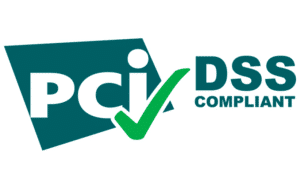The common saying “You need to spend money to make money” holds especially true for businesses. You can not get a business up and running without making costs. You will need cash for a variety of reasons, like supplies, inventory, location, hiring and more.
Apart from start-up costs, there’s also a long list of running expenses that businesses have to meet. If they wish to keep their doors open.
Many growing organizations have to plan out their financial runway. Finance teams have an idea of when their business is able to break even. So their cash levels are enough to pay for production and operating expenses. All before the business can actually turn a positive operating income.
Every kind of business has a variety of expenses that it needs to meet. Let’s look into the types of expenditure and see how you can manage them.
What are business expenses?
Expenses are simply described as the outflow of money. From one business to another. They are made to procure goods and services.
Expenses can be divided into two categories. Operating and non-operating expenses. Managing these expenses is key to the financial health of a business. It will have no chance of surviving if expenses continue to outpace revenues.
Revenues
– Cost of Goods Sold (COGS)
——————————————————————-
= Gross profit
– Operating expenses
——————————————————————-
= Operating income
+/- Non-Operating expenses/income
——————————————————————-
= Net income
Operating expenses
All expenses incurred in order to stay in business are classified as operating expenses. These are the costs that a business has no choice but to bear.
Operating expenses do not include the expenses that happen during production. That expenditure is actually classified as the Cost of Goods Sold (COGS).
To meet its operating expenses, a business has to spend from the cash that it has in its possession. That’s why cash flow is so important. If a business doesn’t have enough cash flow, it may only be able to borrow for so long.
Not all businesses will have the same kind of operating expenses. A cleaning service will have different expenses compared to a construction company.
The size of the business has a bearing on its operating expenses as well. A one-person construction firm will have much lower expenses. Especially compared to a large construction company that has offices in multiple countries.
Non-operating expenses
The expenses that are not related to the core operations are called non-operating expenses.
There are several kinds of non-operating expenses. Most notably the capital expenditures.
These are investments that get capitalized or written off over an extended period. For example, the purchase of a large piece of machinery. Or a patent.
Non-operating expenses also include:
- financing costs, like the interest on borrowed money;
- asset write-downs;
- loss on the sale of assets;
- fees for foreign currency exchange, etc.
One-time expenditures are often non-operating expenses. For example, the cost of relocating your store can be classified as such.
Other examples are incidental costs for legal advisors, management consultants, etc. Especially if related to restructuring.
Or take, for example, a business having to pay for COVID tests for employees. That expense could chalk up as non-operating.
The separation of operating and non-operating expenses is important. The true financial performance of the business will not be visible until the two are listed separately. Financial forecasting mistakes can then be avoided.
A deep dive into operating expenses
Most businesses will generally incur some or all of the below-operating expenses. Payroll for the staff is one of the most basic expenses.
The more people a company employs, the more it has to pay in salaries. And you also need to count associated expenses. Such as benefits, employee health insurance, allowances, and more.
Cost for business premises also makes up a significant chunk of the operating expenses. Like rent, maintenance, office supplies, and utilities. They are proportional to the scale of the company.
A business with multiple locations will have much higher expenses under this head. Especially compared to one with just a single office.
Businesses can also spend considerable sums on marketing and advertising efforts. Though these might be discretionary (can be scaled down during a bad month), they are still operating expenses.
The height depends on the industry you’re in and the demographic that you want to target. The more competitive the industry, the higher your cost outlay. Just to get your message out to potential customers.
The most common operating expenses:
- Wages
- Pension contributions
- Office rent and repairs
- Business equipment
- Office supplies
- Utilities
- Insurance
- Vehicle expenses
- Business travel
- Sales commission
- Sales materials like brochures
- Advertising (Including Facebook/Google/etc)
But how do you compare the performance of your business to its competitors? Simply relying on the total number of sales at the end of the month isn’t going to provide an accurate result.
It’s the operating expense ratio that tells you how your business is performing compared to others in the industry.
How to calculate your operating expense ratio?
The operating expense ratio, or the so-called OER, provides a direct comparison of your expenses to your income.
It’s a measure of how much income is being spent on production and operating expenses.
A low OER means that less income is being spent to meet the expenses. And that is usually a good thing.
The formula used to calculate the operating expense ratio is:
(Cost of Goods Sold + Operating Expenses) / Revenues = OER.
Example:
| Revenue | $400,000 |
| Cost of Goods Sold | $100,000 |
| Operating Expenses | $140,000 |
With these representative values, the formula yields an OER of 0.6. This shows that the business is spending 60 cents of every dollar made on the costs associated with running the business.
Compare the OER of your business to industry benchmarks to see whether the result is good or bad. A high OER compared to others may signal a decline in the operating efficiency of your business. You then want to take steps to increase efficiency. And thus bring down the OER.
Stay in the know
Our latest blog articles, business developments and finance news. Straight into your inbox.
How to manage your operating expenses
As we have seen, your profitability is partly dependent on the operating expenses. If they’re higher, your business will be making less profit. There are limited avenues for a business to try and increase profitability.
A. It could raise prices in order to increase margins. But that can be a risky move. Customers may not be willing to pay higher prices for the same product. This would give them a push to switch to a competitor. So even if the higher prices result in more revenue, the loss in turnover could negate that.
B. Another way to try and improve margins is to reduce the Cost of Goods Sold. This would involve squeezing more value out of the supply chain. For large production companies, this is standard practice. And their suppliers can usually achieve this through economies of scale.
However, it may eventually impact the quality of the product. For example, if cheaper labour and raw materials are used.
Customers that care about product quality would again have an impetus to switch. Particularly if the lower quality product is being sold at the same. Or even a higher price than before.
That’s why when most organizations are faced with the challenge of increasing margins, their first plan of action is to trim operating expenses. A thorough review of expenditures will reveal some areas where cuts can be made. Without having to lower quality or raise prices.
Outsourcing work has been a proven way of reducing operating costs. All major conglomerates are outsourcing. They relocated customer service teams and online support jobs to cheaper markets. This actually leads to savings in other areas as well.
If the entire customer support team is now based offshore, the business can move into smaller offices. It saves on rents, utilities and office supplies.
More recently, businesses have set their hopes on artificial intelligence (AI) for improving efficiency. By using AI they aim to automate repeated tasks.
Bots trained by machine learning can handle jobs from appointment scheduling to the reconciliation of bank statements. Anything that required complex spreadsheets and manual intervention in the past, maybe up for grabs.
The automation of business spend
Automation can also play a major role in managing expenses. Using software to track and control employee expenses can already make a significant impact in bringing down operating expenses.
An integrated spend management tool, like SimpledCard’s platform for fluid business operations, can make a key difference. Organizations can link payment cards they issue through SimpledCard to its smart spending software.
Integrating your payment method in this way eliminates the need for laborious reconciliation of credit card or bank statements. Thus enabling finance managers to exercise better control over expenditures. Including their operating expenses.
The intelligent cards can quickly be issued and flexibly assigned to employees. With preset limits, finance managers are always clear about the financial outlay of the company.
Cards can be topped up in real time. The balance of the payment card can be increased in seconds. For example, if an employee needs to make an unplanned business expense.
The smart spending software provides access to the latest transaction data with real-time reporting. SimpledCard’s platform also integrates with your ERP and accounting software to allow for automated data exchange.
Your role-based approval processes can be reflected, ensuring improved governance. Finance managers will have the ability to instantly review the current spending.
It also makes it easier for employees to justify their business expenses and submit receipts. All of that can be done through the mobile app. Receipts can be uploaded and tagged on the go.
Must-haves for your operating spend system
Your organization should have a spend management plan in place. The plan will list the processes that will be used to optimize spending versus business activity. This won’t cover things like payroll and standard operating expenses.
Rather, the spend management policy will help curtail discretionary or avoidable expenses.
This can include incidentals, monthly software subscriptions, travel expenses, and more. For example, a company might reduce the number of non-value-added business trips sales executives can take. Asking them to conduct more meetings virtually instead.
If employees are given company cards, the policy will dictate what they can and can’t spend on the business. Relevant cost types and budgets can then be assigned to each team.
The justification of expenses
Employees have to justify the expenses they make on company cards. They may still have to submit a reimbursement claim if they end up spending money out of pocket.
A robust spend management system will automate and simplify the justification of each transaction. For instance, SimpledCard’s system allows for easy expense justification.
Whenever employees use their payment card, they can instantly justify the expense. They do this by taking a picture of the receipt through the app, linking it to the transaction. Finance managers review all expense claims through a single dashboard. And, can quickly request additional information if needed.
This makes things simple for both the employee and the business. They don’t have to juggle dozens of receipts. Or waste valuable time doing paperwork just to submit a claim.
They can instantly justify expenses through the mobile app. Using your own cost types to self-allocate the costs.
Visibility over expenses for finance teams
Finance managers benefit from real-time reporting. They have complete visibility over the cards and all transactions. All claims come up for approval immediately.
They don’t have to handle paperwork, eliminating repetitive document scanning tasks. Nor do they need to chase down employees for missing receipts.
Everything happens digitally and in real time. In addition to that, it’s also possible to easily split lines or add references to expenses. This results in better recordkeeping. Transactions can be sorted and filtered for bulk actions.
A business with multiple entities can utilize multiple environments in SimpledCard’s platform. In this way, they can accurately track expenses. For each entity with their own separate books.
All relevant VAT levels, cost types and cost centres can be quickly assigned per account. And you can set your own rules. Such as the automatic top-ups of budgets allocated to each card.
Using the insight that SimpledCard’s system provides, you can gain tighter control over your operating expenses. You drive efficiency in the expense management process. And your teams can contribute to optimizing their own spending. Now that’s one good step towards a lower OER!
If you have any questions about operating expenses? Or how you control expenses best for your organization? Feel free to contact us for an initial consult. Together with one of our experts, you will look at your company’s needs and set up a plan.
Stay in the know
Our latest blog articles, business developments and finance news. Straight into your inbox.





